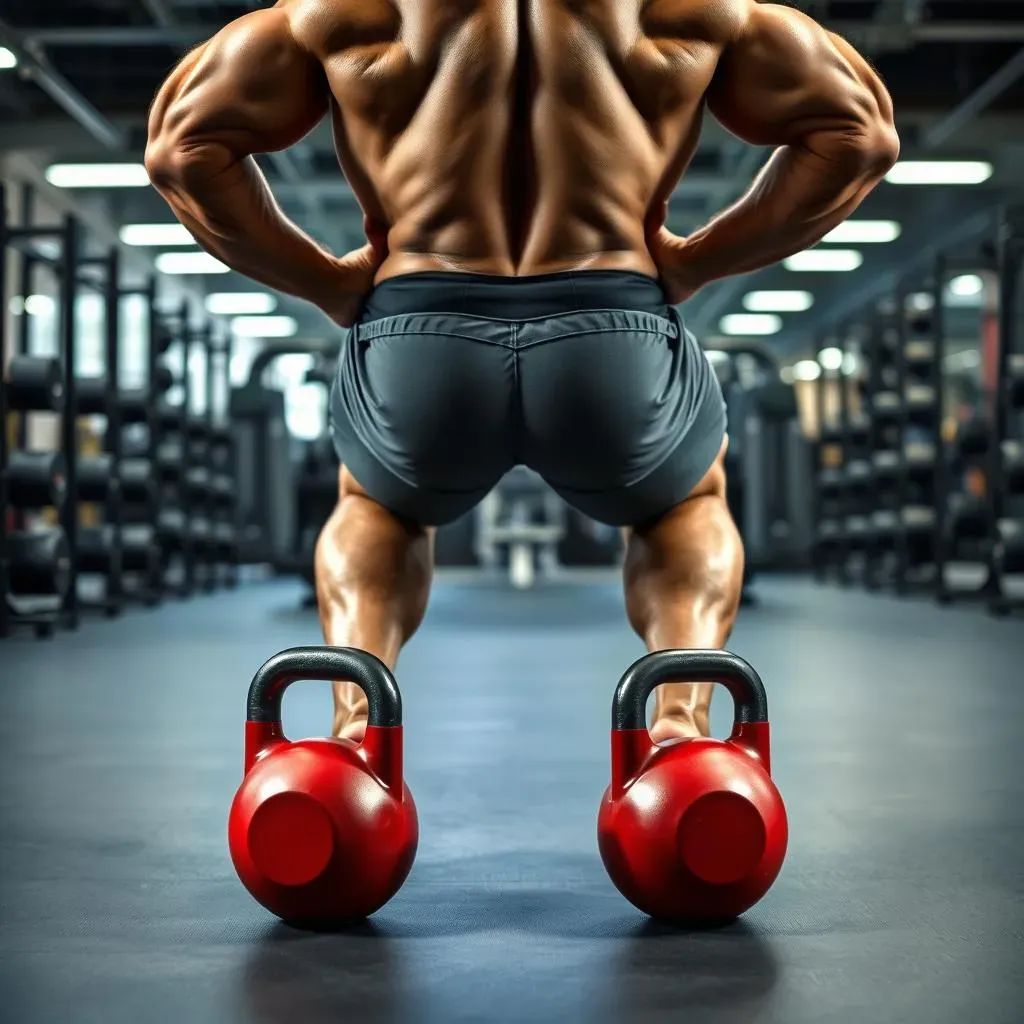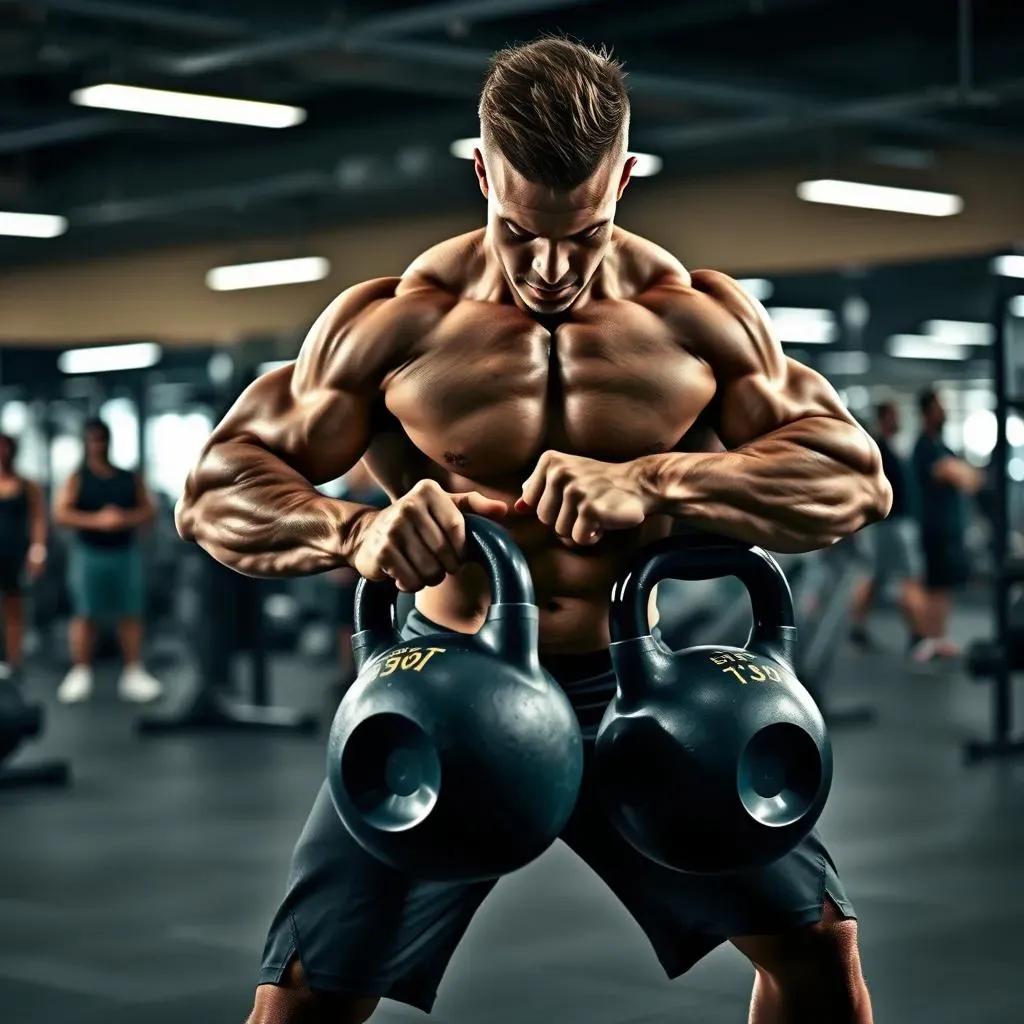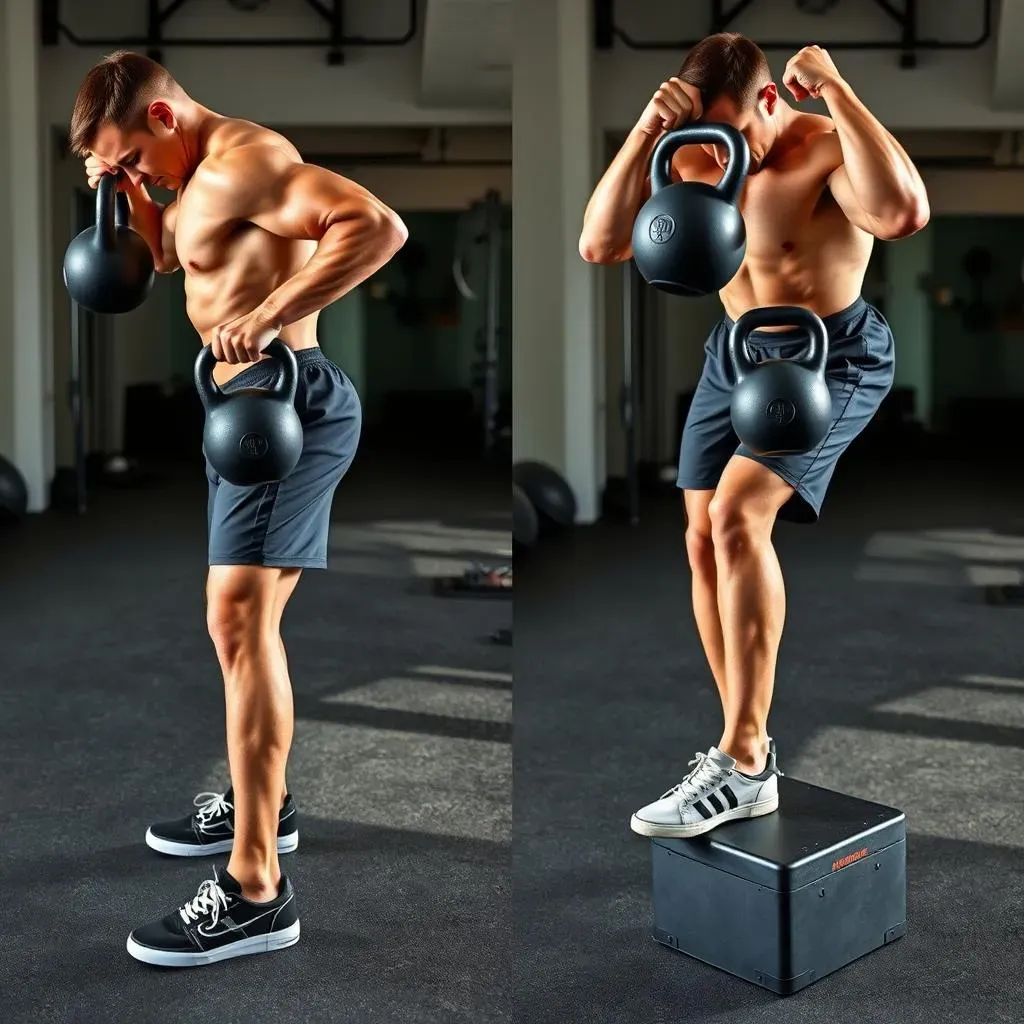Table of Contents
Ready to take your deadlift game to the next level? The double kettlebell deadlift is a fantastic exercise for building full-body strength, improving your posterior chain, and boosting your overall power. Unlike barbell deadlifts, this variation challenges your stability and coordination, forcing you to engage your core and stabilizer muscles more intensely. This article will be your comprehensive guide to mastering the double kettlebell deadlift. We'll break down the proper form step-by-step, ensuring you perform the exercise safely and effectively. Then, we'll explore the numerous benefits this exercise offers, from increased strength and power to improved posture and core stability. But that's not all, we'll also dive into exciting variations to keep your training fresh and challenging. Finally, we will give you practical tips on how to seamlessly integrate the double kettlebell deadlift into your existing workout routine, optimizing your gains and preventing plateaus. So, grab your kettlebells, and let's get started on unlocking your deadlift potential!
Double Kettlebell Deadlift: Mastering the Form

Double Kettlebell Deadlift: Mastering the Form
Setting Up for Success
Before you even think about lifting, getting your setup right is crucial for a safe and effective double kettlebell deadlift. Start by placing two kettlebells on the floor, positioned just outside your feet. Your feet should be about shoulder-width apart, maybe a little wider, depending on what feels most comfortable and stable for you. Think about your stance as similar to what you'd use for a conventional deadlift or squat. Now, here's a pro-tip: make sure the kettlebells are aligned! You don't want one slightly ahead of the other, as that can throw off your balance and lead to uneven loading. A good mental cue is to imagine a straight line running between the handles – keep those bad boys parallel.
The Hip Hinge and Grip
Now for the hinge – the bread and butter of any deadlift. Push your hips back, keeping your back straight (we'll get to that in a sec), and lower yourself down to grip the kettlebells. Your shins should be relatively vertical at this point. Don't let your knees shoot way out over your toes. When you grip the kettlebells, aim for a firm, neutral grip. This means your palms should be facing your body. Avoid gripping too tightly, as that can lead to unnecessary tension in your forearms and shoulders. Think about "grabbing" the handle, not "strangling" it. Before you initiate the lift, actively engage your lats (those muscles on the sides of your back). This helps to stabilize your spine and prevents your back from rounding.
The Lift and Lockout
Time to bring those kettlebells up! Take a deep breath, brace your core, and drive through your heels to stand up. Focus on squeezing your glutes and hamstrings as you extend your hips. Keep your back straight and your core engaged throughout the entire movement. Avoid yanking the weight up or letting your back round. The kettlebells should travel in a straight line, close to your body. At the top of the movement, fully extend your hips and knees, squeezing your glutes. Your shoulders should be pulled back and down, and your chest should be proud. Avoid hyperextending your back at the top. The lockout should be a strong, stable position, not a backwards bend.
Benefits of the Double Kettlebell Deadlift

Benefits of the Double Kettlebell Deadlift
Full-Body Strength and Power Development
One of the biggest perks of the double kettlebell deadlift is its ability to build serious full-body strength. You're not just working your legs and back; you're engaging your core, shoulders, and grip. It’s a compound exercise, meaning it works multiple muscle groups simultaneously, making it incredibly efficient for building overall strength and power. Think of it as a total body blast that delivers more bang for your buck than isolation exercises. This translates to improvements in other areas of your fitness, from your squat and bench press to your ability to carry heavy groceries without straining your back.
Because you're using two kettlebells, you're also forced to stabilize the weight in a way that a barbell deadlift doesn't always require. This added stability demand recruits more muscle fibers, leading to greater strength gains over time. It's like adding an extra layer of challenge that forces your body to adapt and become stronger.
Improved Posterior Chain Strength and Stability
The posterior chain, which includes your glutes, hamstrings, and spinal erectors, is crucial for athletic performance and everyday movement. The double kettlebell deadlift is an excellent exercise for strengthening this vital muscle group. By hinging at the hips and driving through your heels, you're directly targeting your glutes and hamstrings, building strength and power where it matters most. A strong posterior chain not only improves your athletic abilities but also helps to prevent injuries by providing stability and support for your spine.
Unlike some isolation exercises that only target one muscle at a time, the double kettlebell deadlift engages your entire posterior chain in a coordinated manner. This means you're not just building strength; you're also improving your body's ability to work as a unit. This is particularly important for activities that require explosive movements, such as jumping, sprinting, and lifting heavy objects.
Enhanced Core Engagement and Stability
A strong core is essential for everything from maintaining good posture to preventing back pain. The double kettlebell deadlift is a fantastic exercise for building core strength and stability. Because you're holding two kettlebells, your core has to work overtime to stabilize your spine and prevent you from rotating or tilting. This constant engagement strengthens your abdominal muscles, obliques, and lower back muscles, leading to a more resilient and functional core.
Furthermore, the double kettlebell deadlift teaches you how to brace your core properly, which is a skill that translates to other exercises and everyday activities. By learning how to create intra-abdominal pressure, you can protect your spine and generate more power. This is especially important for preventing injuries when lifting heavy objects or performing strenuous activities.
Double Kettlebell Deadlift Variations for Strength and Power

Double Kettlebell Deadlift Variations for Strength and Power
Romanian Deadlift (RDL) with Double Kettlebells
The Romanian Deadlift (RDL) is a fantastic variation that hammers your hamstrings and glutes even harder than the standard deadlift. Instead of starting from the floor, you begin standing upright, holding the double kettlebells in front of your thighs. The key is to maintain a slight bend in your knees throughout the movement and focus on pushing your hips back as far as possible. Lower the kettlebells towards the ground, keeping your back straight and your core engaged. You should feel a deep stretch in your hamstrings as you reach the bottom of the movement. Then, squeeze your glutes and hamstrings to return to the starting position. This variation emphasizes the eccentric (lowering) portion of the lift, which is great for building muscle and improving strength.
One of the biggest benefits of the double kettlebell RDL is that it allows you to really focus on the mind-muscle connection with your posterior chain. By slowing down the movement and concentrating on feeling the stretch in your hamstrings, you can maximize muscle activation and growth. It’s also a great way to improve your hip hinge mechanics, which is essential for preventing injuries and improving performance in other exercises.
Deficit Double Kettlebell Deadlift
Ready for an extra challenge? The Deficit Double Kettlebell Deadlift involves standing on a slightly elevated surface, such as a weight plate or a small platform, while performing the deadlift. This increases the range of motion, forcing you to lower the kettlebells further towards the ground. This variation places a greater demand on your hamstrings, glutes, and spinal erectors, leading to increased strength and muscle growth. Be careful not to overdo it with the height of the deficit – a small increase in range of motion is all you need to reap the benefits.
The Deficit Double Kettlebell Deadlift is a great way to break through plateaus and challenge your body in new ways. It also improves your flexibility and mobility, as you're forced to stretch your hamstrings and hips further than you would in a standard deadlift. However, it's important to approach this variation with caution, as it can put more stress on your lower back. Make sure you have a solid foundation of strength and proper form before attempting this exercise.
Variation | Focus | Benefits |
|---|---|---|
Romanian Deadlift (RDL) | Hamstrings and Glutes | Increased muscle activation, improved hip hinge |
Deficit Deadlift | Hamstrings, Glutes, Spinal Erectors | Increased range of motion, strength gains |
Programming the Double Kettlebell Deadlift into Your Routine

Programming the Double Kettlebell Deadlift into Your Routine
So, you're ready to incorporate the double kettlebell deadlift into your workout plan? Awesome! The key here is to think smart, not just hard. Start by assessing your current strength level and training experience. If you're new to deadlifts or kettlebells, begin with lighter weights and focus on mastering the form. It's always better to start conservatively and gradually increase the weight as you get stronger. Consider your overall training goals. Are you looking to build strength, power, or endurance? This will influence your rep ranges and set configurations. For strength, aim for lower reps (3-5) with heavier weights. For power, focus on explosive movements with moderate weight (6-8 reps). And for endurance, go for higher reps (10-12) with lighter weights. Don't forget to factor in your recovery. The double kettlebell deadlift is a demanding exercise, so make sure you're getting enough rest and nutrition to support muscle growth and repair. Listen to your body and don't be afraid to take rest days when needed.
When programming the double kettlebell deadlift, consider these points:
- Frequency: Aim for 1-3 times per week, depending on your training goals and recovery ability.
- Sets: Perform 2-4 sets per workout.
- Weight: Choose a weight that allows you to maintain proper form throughout the entire set.
- Rest: Allow for adequate rest between sets (2-3 minutes for strength, 1-2 minutes for power, and 30-60 seconds for endurance).
Conclusion: Embrace the Double Kettlebell Deadlift for Full-Body Strength
The double kettlebell deadlift is more than just a variation; it's a powerful tool for building functional strength, improving your movement patterns, and challenging your body in new ways. By mastering the proper form, understanding its benefits, and incorporating variations, you can unlock a new level of performance in your training. So, don't be afraid to experiment, listen to your body, and enjoy the process of becoming stronger and more resilient with the double kettlebell deadlift.